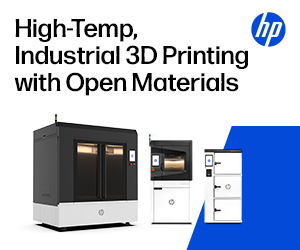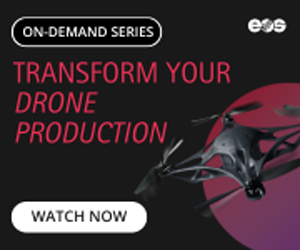Is Amazon Getting Ready to Try and Supplant Shapeways as Top 3D Printing Service? Patents Point Toward Something Big
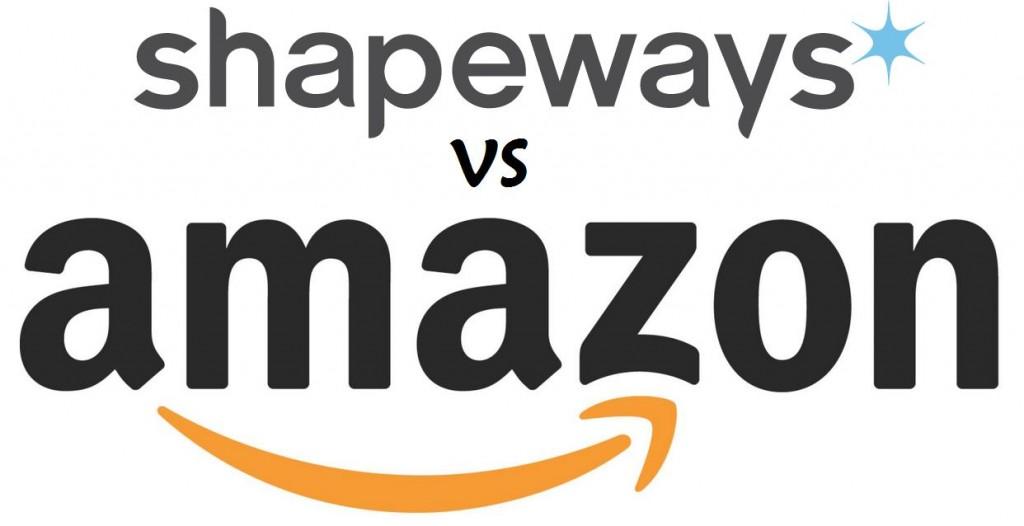 Amazon is the largest marketplace for goods on the internet. They have been growing at a rate unequal to other online marketplaces, and the main reason is because they are innovators. They innovate in areas where other companies don’t have the resources to do so. Take for example, their Amazon Prime membership, which allows members to receive products within 2 days of ordering, at no additional costs. Very few companies have unrivaled economies of scale, but Amazon is one of them. They have the resources to make advantageous agreements with others, in order to drive down prices, increase availability, and in the end, provide the best possible experience to online shoppers.
Amazon is the largest marketplace for goods on the internet. They have been growing at a rate unequal to other online marketplaces, and the main reason is because they are innovators. They innovate in areas where other companies don’t have the resources to do so. Take for example, their Amazon Prime membership, which allows members to receive products within 2 days of ordering, at no additional costs. Very few companies have unrivaled economies of scale, but Amazon is one of them. They have the resources to make advantageous agreements with others, in order to drive down prices, increase availability, and in the end, provide the best possible experience to online shoppers.
For those familiar with 3D printing, the one destination that rules them all, when it comes to having your 3D design printed out and/or brought to market, is Shapeways. They are the largest marketplace for 3D printed goods in the world. Anyone can upload 3D designs, have them printed out, and then if they want, add them to the online marketplace for others to purchase. Many have suspected that it’s only a matter of time before Amazon does something similar. After all, they have a market capital of $138.4 billion, so resources and cash certainly can’t be much of an issue.
Amazon recently opened a section of their marketplace, where companies like 3DLT, and Sculpteo can sell items that they have designed and printed out. However, this is nothing like what Shapeways currently does. Shapeways actually prints items in house, based on designs supplied by clients, and then ships those printed objects to the designer, or anyone else that wishes to purchase that particular object
3DPrint.com has discovered a patent which has been filed for and granted to Amazon.com, for a 3D printing service and marketplace. The patent which was filed for, several years ago, was granted by the US patent office in 2013. It sounds eerily similar to Shapeways, in many facets, but expands upon their ideas in other ways.
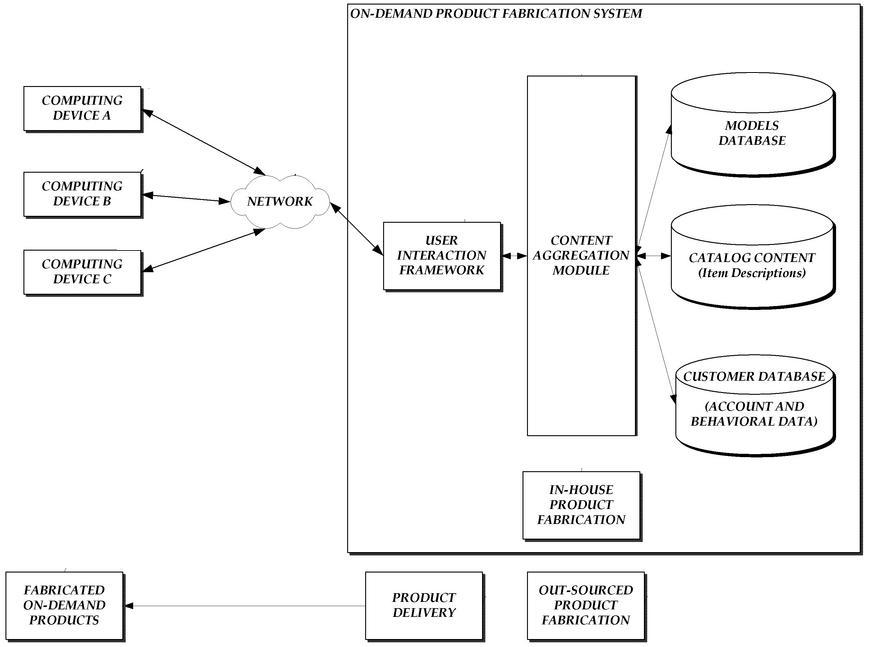
The patent allows for 3D designers to upload their designs onto a marketplace (presumably Amazon’s current marketplace), and sell or rent out, either the designs themselves, or a 3D printed fabrication. If a fabrication is chosen, an in house Amazon 3D printer would print out that object and then it would be shipped to the buyer. The patent also allows for the 3D printing to take place in a remote location. While it doesn’t go into specifics, one can imagine what this means. Perhaps the designer of the object would have a preferred print location in mind, that features 3D printers capable of printing that object. He could then have the object printed on those printers. This may also be included in the patent filing simply because, at the time of the filing, Amazon was unsure if they would outsource the actual 3D printing, or if it would take place in house. With Amazon’s financials, it would be our guess that they would utilize their own 3D printers located in different locations around the world.
Amazon explains this option of either remote or local fabrication in the patent filing by saying:
In some embodiments, the product may be fabricated geographically locally to the on-demand product fabrication system, and in other embodiments, the product may be fabricated geographically remotely from the system.
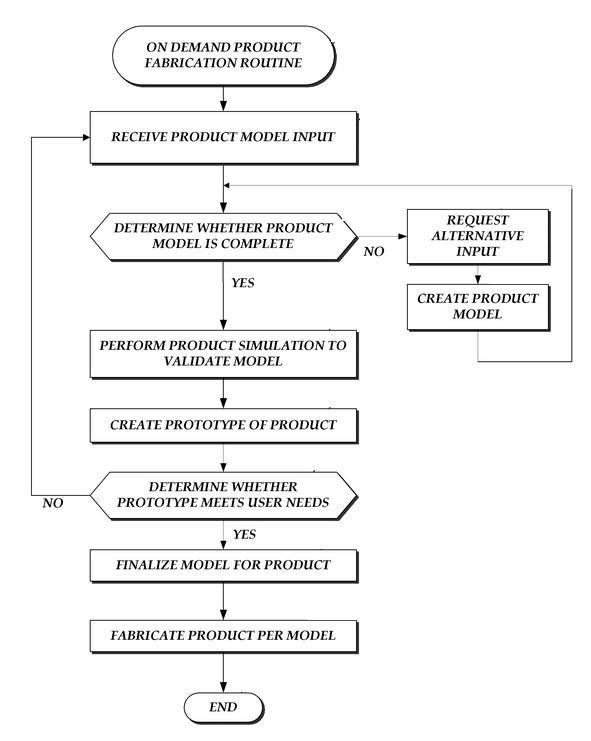 On top of offering a fabricated (3D printed) product, designers may also choose to offer a manufactured model of that design in 3D printable format. This means that for those buyers that already have 3D printers, or those that have access to 3D printers, they can simply purchase and download the 3D printable file. The patent explains that the manufactured model files may be sold, rented, licensed, downloaded, etc., and may include various licensing options.
On top of offering a fabricated (3D printed) product, designers may also choose to offer a manufactured model of that design in 3D printable format. This means that for those buyers that already have 3D printers, or those that have access to 3D printers, they can simply purchase and download the 3D printable file. The patent explains that the manufactured model files may be sold, rented, licensed, downloaded, etc., and may include various licensing options.
“The license may be fee-based such as, e.g., requiring a fee for the model and/or a royalty based on the number of products fabricated from the model. In some implementations, the on-demand fabrication system may charge the user a fee to display the detail page for the model or product or may require payment of fees based on the licensing fees or royalties.”
What is very interesting, is the entire process of how a 3D printable design will go from being uploaded by the designer, to its final destination at a buyer’s doorstep. There are many steps in the process, that Amazon lays out.
First a design is uploaded. Once it’s been uploaded, there is an elaborate process of validating and perfecting the model, as explained in the patent:
“The user interaction framework may provide various tools to allow a user to input, to validate and finalize a model for fabrication, to create a physical prototype of the product and catalog content about the model and/or product. For example, the user interaction framework may include model input tools, model completeness verification tools, model validation tools, prototype creation tools, model finalization tools, catalog content creation tools, and so forth.”
What exactly are all these tools? They are ways the system will determine if the object is worth 3D printing or not, and help the designer bring the best 3D printable design to market. Here are some more detailed explanations of what these tools are able to be used for.
1) Model Input Tools – Allow for the user to upload the model to the system.
2) Model Completeness Verification Tools – The system will verify if the model is in fact a 3D printable model.
3) Model Validation Tools – Validates the representation of product dimensions or configuration, representation of material tolerances, sensitivity to different fabrication or performance scenarios, compliance with industry, regulatory, quality, and/or safety standards, etc. This will allow the designer to make corrections prior to the fabrication of a prototype. These tools may also be used to mimic real world influences on a design, including stresses, impact, heat, airflow, assembly simulation, fully-integrated mechanism simulation, simulation of welded structures, product failure prediction, prediction of buckling and collapse, heating and cooling simulation, simulation of drop test and impact, nonlinear dynamics, simulation of loading effects, simulation of plastic parts, fluid flow simulation, how much weight the object can carry, determining if moving parts clash, if the item is top heavy, etc.
4) Prototype Creation Tools – This allows the designer to order a prototype of the product to test the actual tangible fabricated object. Once received, more modifications may take place.
5) Model Finalization Tools – This allows the designer to finalize the product before they decide to print it out, sell/license out the manufactured model, or sell actual fabrications of the model.
6) Catalog Content Creation Tools – This is where everything comes together and the item is cataloged for resell, if decided upon by the designer.
As seen in the steps above, it seems as though Amazon may be planning to have a very elaborate system of aiding the designer prior to finalization of their design(s). The could help tremendously, in ensuring that products are ready for real world use, and in reducing prototyping costs.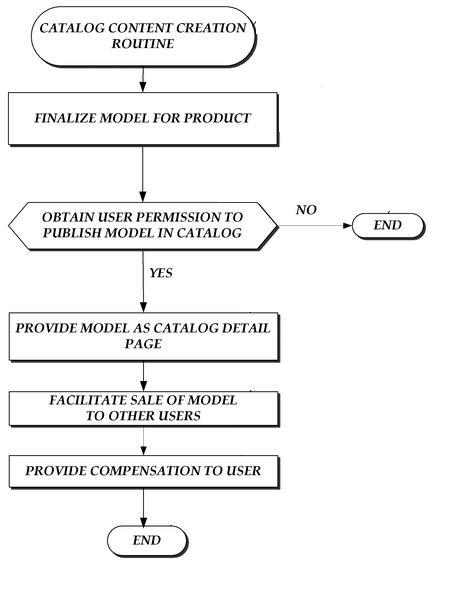
The catalog will be the place where designs can be viewed, searched for, and found via other methods. It appears to be very similar to the current Amazon marketplace. Currently if you need a product on Amazon, you search for it. You will then be shown other similar products, and products that other people usually purchase to complement it. The catalog outlined in this patent, seems to be very similar in nature.
The catalog detail page will have all the details for the designed object, including price, measurements, etc. This is explained in more detail in the patent filing:
“The catalog detail page may include details such as, e.g., images and information about the product that can be fabricated using the model, dimensions of the product, materials from which the product can be fabricated, material tolerances of the product, availability of the product as a sub-component of another existing product, availability of sub-components of the product, availability of a kit of sub-components of the product available for final assembly, and the like.”
Another way that Amazon could go in a direction that is not quite like the Shapeways’ business model, is that they could also utilize other technologies, other than 3D printing. The patent filing also discusses these.
“Some 3D printing devices may include 3D milling machines, computed numerically controlled (CNC) machines, laser-cutter machines, and the like.”
Wouldn’t it be interesting to have the ability to not only use high quality 3D printers but also CNC machines, laser cutters, milling machines, as well as other hardware? This could allow for the development of more sophisticated products other than things that are only printable on 3D printers.
While Amazon has filed a patent for what seems to be a pretty elaborate 3D printing marketplace, this does not confirm that they plan to launch one. However, knowing Amazon, they are always trying to stay one step ahead of the game. It would surprise me quite a bit if they do not pursue the services outlined in the intellectual property that they have protected in this patent. We contacted Amazon for a comment, but all we got was the standard, “We are not making any announcement or comments at this time. Please feel free to stay in touch in the future.”
Discuss this patent filing, along with what this could mean for other 3D printing marketplaces like Shapeways and Sculpteo, in the “Amazon to Supplant ShapeWays?” thread on 3DPB.com.
Subscribe to Our Email Newsletter
Stay up-to-date on all the latest news from the 3D printing industry and receive information and offers from third party vendors.
Print Services
Upload your 3D Models and get them printed quickly and efficiently.
You May Also Like
Top 10 Moonshot Ideas for 3D Printing’s Future
As the year comes to a close, it’s clear that additive manufacturing (AM) is entering a new phase. Costs are falling, supply chains are changing, government spending is rising, and...
3D Printing Predictions for 2026: Scaling AM Through Software
For several years, we have seen additive manufacturing software play a more central role in our industry. LPBF machines achieve higher yields and can produce thinner-walled parts thanks to the...
Who Merged, Who Was Acquired, and Who Disappeared in 3D Printing in 2025
2025 was a year of change for 3D printing, with much of the year’s activity coming from mergers, acquisitions, restructurings, and company exits. Together, these moves indicate a broader shift:...
A Year in 3D Prints: A Visual Journey Through 2025 in AM
2025 was a year of milestones and experimentation in additive manufacturing (AM), marked not only by technical progress but also by the mergers, acquisitions, and restructurings that reshaped the industry,...


















